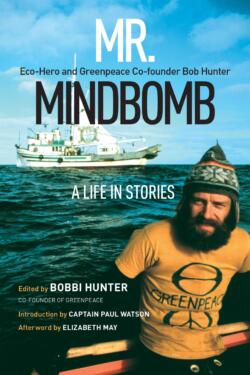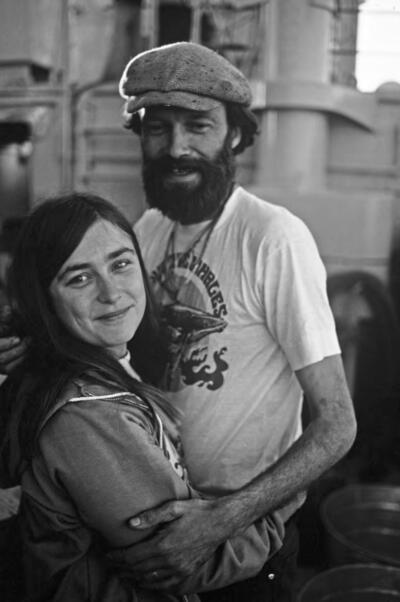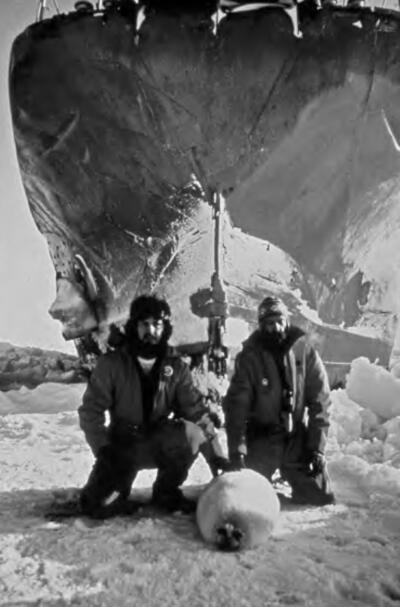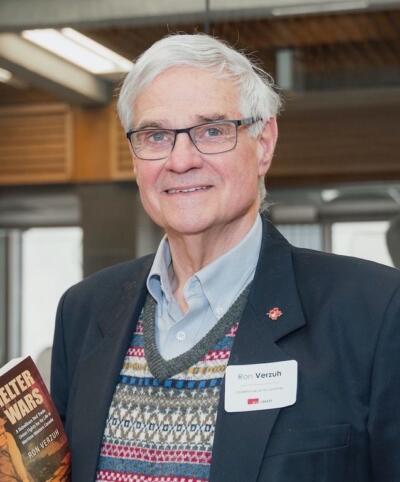1893 Not just an environmental love story
Mr. Mindbomb: Eco-Hero and Greenpeace Co-Founder Bob Hunter – A Life in Stories
edited by Bobbi Hunter
Victoria: Rocky Mountain Books, 2023
$30 / 9781771606240
Reviewed by Ron Verzuh
*
 “A Life in Stories,” explains the subtitle, but it might also have been called a love story, one carefully selected and edited by Bob Hunter’s widow and fellow Greenpeace activist Bobbi Hunter. But this is much more than a love story. As dozens of memories attest, Hunter was loved, respected and even revered as a counterculture hero who risked his life to support his belief in the power of nature.
“A Life in Stories,” explains the subtitle, but it might also have been called a love story, one carefully selected and edited by Bob Hunter’s widow and fellow Greenpeace activist Bobbi Hunter. But this is much more than a love story. As dozens of memories attest, Hunter was loved, respected and even revered as a counterculture hero who risked his life to support his belief in the power of nature.
I was at Vancouver’s Jericho Beach in the fall of 1971 when a small group of activists boarded the fishing vessel Phyllis Cormack and headed straight into the belly of American nuclear testing at Alaska’s Amchitka Island. We didn’t know it at time, as we cheered on the rainbow warriors, but it was the beginning of an international odyssey that became known as Greenpeace. Hunter was at the helm.

As one of the stories explains, Hunter and the crew of two sea craft (the Phyllis Cormack had to turn back and was replaced by a sturdier ship) did not succeed in stopping the tests, but the effort won enough worldwide attention to launch Greenpeace, an immensely successful environmental warrior organization. Hunter, a co-founder, was at the forefront, helping to steer the ship into public consciousness through his Vancouver Sun column in the late 1960s and early 1970s.
As friend and Sun colleague Rod Marining notes, “All one needed to do was be where the action was and call Bob. He would be there making each protest a triumph.” Marining was referencing a protest at the University of BC that involved Yippies Jerry Rubin and Abbie Hoffman.
The love story from family, friends and Hunter’s many colleagues and co-conspirators is moving and heartfelt, but the real action in the book hinges on recollections of adventure, risk, humanity and personal sacrifice. One story recalls an exploding Russian harpoon flying over Hunter’s head. Another has him playing chicken with an icebreaker as an “eco-commando.”
The Amchitka mission led to many years of confrontations with Japanese factory whaling ships, Amazon rainforest destroyers, and Newfoundland seal hunters where former French sex symbol Brigitte Bardot turned animal rights activist joined the Greenpeace crew to protect baby seals.

Some of the chapters depict swashbuckling encounters where Hunter is seen applying his “mindbomb” philosophy. Greenpeace colleague Rex Weyler describes Hunter’s theory. He had it that the fastest way to change society “involved launching images and stories – ‘mindbombs’ – that would ‘explode in people’s heads’.”
Hunter was a master of the technique, bringing a street-taught journalistic talent to the task of saving the planet that he used throughout his life. At the Sun, he was a beacon for the environmental movement. Later, as a reporter for his friend Moses Znaimer’s CityTV in Toronto, he was in the thick of every skirmish and brought many issues to the public’s attention.
His one failure, losing an Ontario byelection, is accredited to “a nasty NDP smear campaign.” But to Greenpeace followers it was another Hunter success in that it drew attention to the cause. Hunter was always more comfortable as a quiet instigator of action and an embedded reporter of those actions.
Anyone who followed the Greenpeace saga knows there were struggles over leadership and strategy and the book includes mentions of the ego-fueled fights with David McTaggart and Patrick Moore. But this does not seem like a set-the-record-straight book, an attempt to cast blame. It is a sharing of one man’s life accomplishments as told by those who knew him best.
Hunter died in 2005, begging the question: why a book now? His 14 books are listed and we get quotations that reveal the brilliance of some of Hunter’s writing and the passion he exercised in promoting a sane approach to caring for the planet.

There is also an insightful interview with Greenpeace San Francisco founder William E. Jackson in which Hunter enlarges on his philosophy of loving Mother Earth. He also reflects on flawed heroes, saying “the only hero left now is the anti-hero, the expatriate, the anti-patriot, the insurgent.”
Each contributor receives a short biographical note which helps readers understand the writer’s perspective. Many of them are talented writers, TV producers and publishers such as Douglas Gibson who published several of Hunter’s books at McClelland & Stewart. And the book doesn’t shy from including some of the personal battles with Sea Shepherd Conservation Society captain Paul Watson, Hunter’s combative life-long friend.
Who was Bob Hunter, some readers might ask? After all, almost 20 years have passed since his death from prostate cancer. But there are reminders of his legacy everywhere. At least two parks named after him, scholarships to help young people, and there is his Whole Earth Church. These are lasting monuments to a man who lived his life for the rest of us.
But clearly Hunter’s biggest legacy is Greenpeace itself. With 26 organizations in 55 countries around the world, its website shows that it continues what Hunter helped start back in 1971, “working directly with communities on the frontlines as they protect the environments they call home.”

*

Ron Verzuh is a writer, historian and documentary filmmaker. His latest book is Printer’s Devils, a social history of a small-town weekly newspaper in the BC interior. For another view of Hunter’s media strategy at work, see Stephen Dale’s McLuhan’s Children (Between the Lines, 1996). BTL’s blurb calls it “an inside look at Greenpeace’s rise to global prominence through its savvy use of mass media imagery. From the flamboyant, guerilla-theatre approach to the emergence of environmentalism as a dominant international issue.” [Editor’s note: Ron Verzuh has recently reviewed books by BC Hydro Power Pioneers with Kerry Gold, J. Edward Chamberlin, Glen A. Mofford, Derek Hayes, Keith G. Powell, Derryll White & Erin Knutson for The British Columbia Review, and he has contributed an essay on trade unionist Harvey Murphy. Ron lives in Victoria.
*
The British Columbia Review
Interim Editors, 2023-24: Trevor Marc Hughes (non-fiction), Brett Josef Grubisic (fiction)
Publisher: Richard Mackie
Formerly The Ormsby Review, The British Columbia Review is an on-line book review and journal service for BC writers and readers. The Advisory Board now consists of Jean Barman, Wade Davis, Robin Fisher, Barry Gough, Hugh Johnston, Kathy Mezei, Patricia Roy, Maria Tippett, and Graeme Wynn. Provincial Government Patron (since September 2018): Creative BC. Honorary Patron: Yosef Wosk. Scholarly Patron: SFU Graduate Liberal Studies. The British Columbia Review was founded in 2016 by Richard Mackie and Alan Twigg.
“Only connect.” – E.M. Forster
4 comments on “1893 Not just an environmental love story”